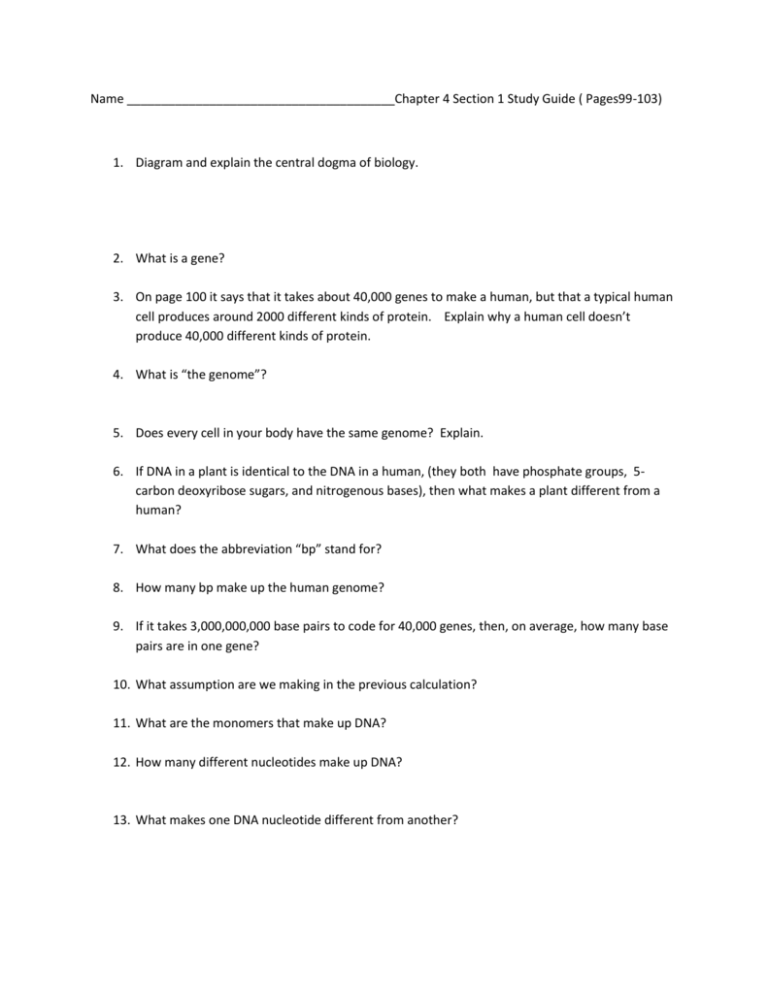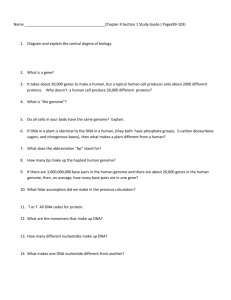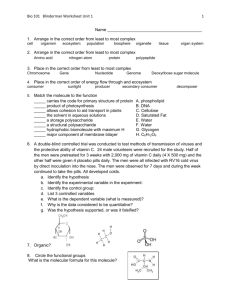reading guide for chapter 4, section 1
advertisement

Name _______________________________________Chapter 4 Section 1 Study Guide ( Pages99-103) 1. Diagram and explain the central dogma of biology. 2. What is a gene? 3. On page 100 it says that it takes about 40,000 genes to make a human, but that a typical human cell produces around 2000 different kinds of protein. Explain why a human cell doesn’t produce 40,000 different kinds of protein. 4. What is “the genome”? 5. Does every cell in your body have the same genome? Explain. 6. If DNA in a plant is identical to the DNA in a human, (they both have phosphate groups, 5carbon deoxyribose sugars, and nitrogenous bases), then what makes a plant different from a human? 7. What does the abbreviation “bp” stand for? 8. How many bp make up the human genome? 9. If it takes 3,000,000,000 base pairs to code for 40,000 genes, then, on average, how many base pairs are in one gene? 10. What assumption are we making in the previous calculation? 11. What are the monomers that make up DNA? 12. How many different nucleotides make up DNA? 13. What makes one DNA nucleotide different from another? 14. Draw a double-stranded DNA molecule. Be sure to show the antiparallel nature of the doublestranded molecule. Show proper pairing of base-pairs (A,T,G,C). Label a phosphodiester bond and hydrogen bonds. Circle one nucleotide. Draw a box around one base pair. 15. Draw the four nitrogen bases. Which two are purines? Which two are pyrimidines? i 16. T or F A nucleotide and a nitrogenous base are the same thing. Explain! 17. If we know the amount of adenosine deoxynucleotide in a DNA molecule, what else do we also know is true for that DNA molecule? 18. Why is it important that a DNA double-helix has a constant width and a uniform shape along its entire length? 19. Diagram and explain how a DNA molecule replicates. 20. How is DNA replication different from transcription? How is it similar? 21. The DNA molecule shown in figure 4.5 on page 102 is most likely from what typed of organism? Prokaryote or Eukaryote? 22. Make sure you can answer the four review questions at the end of section 4.1











